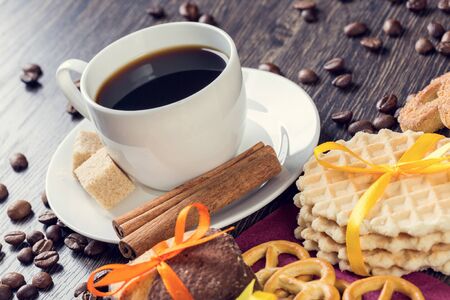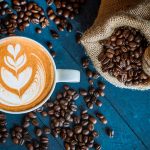1. The Origins of Pumpkin Spice
Long before pumpkin spice became a fall favorite at coffee shops across America, its roots were deeply embedded in the traditions of early American cooking. The blend we now know as “pumpkin spice” is actually a mix of warm spices—typically cinnamon, nutmeg, ginger, cloves, and sometimes allspice—that were commonly used in colonial-era recipes to enhance the flavor of pumpkin-based dishes.
Back then, pumpkins were a staple ingredient in many households due to their abundance and long shelf life. Early settlers used these spices not just for flavor but also for their preservative qualities. Over time, this aromatic combination became closely associated with the comforting smells and tastes of autumn, especially in dishes like pumpkin pie.
The Traditional Spice Blend
The modern version of pumpkin spice isnt far off from what was used centuries ago. Heres a simple breakdown:
| Spice | Flavor Profile | Traditional Use |
|---|---|---|
| Cinnamon | Sweet, woody, warm | Pies, breads, stews |
| Nutmeg | Nutty, slightly sweet | Baked goods, custards |
| Ginger | Sharp, spicy | Cakes, cookies, drinks |
| Cloves | Strong, pungent | Sauces, meats, desserts |
| Allspice (optional) | Mix of cinnamon, nutmeg, and cloves | Pies, marinades |
Pumpkin Pie: The Flavor Icon
No discussion about pumpkin spice would be complete without mentioning pumpkin pie. This dessert became an American Thanksgiving staple by the 19th century and played a huge role in shaping the cultural identity of pumpkin spice. Its popularity helped solidify the connection between these spices and the fall season in the minds—and palates—of Americans.
Aromatic Nostalgia
The scent of pumpkin spice brings back memories for many—family gatherings, crisp autumn air, and cozy moments. It’s this emotional tie that transformed a simple spice blend into something much bigger: a symbol of seasonal comfort and tradition.
2. Starbucks and the Birth of the Pumpkin Spice Latte
Back in 2003, Starbucks introduced what would soon become one of the most iconic seasonal drinks in America—the Pumpkin Spice Latte, or PSL for short. It wasn’t just another coffee flavor; it was a game-changer that helped shape fall culture across the U.S.
How It All Started
The idea began at Starbucks headquarters in Seattle. A small team of product developers wanted to create a new seasonal beverage to follow up on the success of their winter-themed drinks like the Peppermint Mocha. They noticed a growing love for pumpkin pie and other autumn flavors, so they started experimenting.
Interestingly, early versions of the drink didn’t even include pumpkin—just the spices you’d typically find in pumpkin pie: cinnamon, nutmeg, clove, and ginger. The final recipe was adjusted to include real pumpkin puree years later, but by then the PSL had already taken off.
The Launch and Immediate Success
When it first launched in select markets in 2003, the Pumpkin Spice Latte quickly became a hit. Starbucks rolled it out nationwide the following year, and demand kept growing season after season. Today, its estimated that Starbucks has sold over 600 million PSLs since its debut.
Key Moments in PSL History
| Year | Milestone |
|---|---|
| 2003 | Pumpkin Spice Latte debuts in select stores |
| 2004 | Nationwide rollout across all U.S. Starbucks locations |
| 2015 | Recipe updated to include real pumpkin puree |
| 2021 | PSL returns for its 18th consecutive year—earliest release ever on August 24th |
The Cultural Impact of the PSL
The success of the PSL went far beyond coffee cups. It tapped into something deeper—America’s love for fall. The drink became a symbol of cozy sweaters, changing leaves, and Instagram-worthy moments. It even sparked a wave of pumpkin spice-flavored products across every aisle—from cereal to candles.
Starbucks didn’t just sell a drink—they sold an experience. By releasing it only during fall months, they created anticipation and excitement each year. Customers began marking their calendars for PSL season as if it were a holiday.
The Power of Limited-Time Offerings (LTOs)
Starbucks’ marketing strategy around the PSL is a textbook example of how limited-time offerings can drive demand and build brand loyalty:
- Scarcity: Available only during fall months increases urgency to buy.
- Nostalgia: Evokes memories tied to autumn traditions.
- Social Media Buzz: Highly shareable content fuels word-of-mouth marketing.
This smart approach turned a simple spiced latte into a seasonal icon—and set the stage for countless copycats trying to capture that same magic each fall.
![]()
3. The PSL Craze and Its Impact on Coffee Culture
When the Pumpkin Spice Latte (PSL) made its debut, no one could have predicted just how deeply it would impact coffee culture across the United States. What started as a seasonal specialty at Starbucks quickly turned into a nationwide phenomenon that reshaped how coffee shops operate during the fall months.
The Shift in Seasonal Menus
Before the PSL, most coffee shops didn’t focus heavily on seasonal offerings. But once customers began lining up for their favorite fall-flavored drink, coffee chains and independent cafés alike realized they had to adapt. Seasonal menus became not just a trend, but an expectation. Today, you can find entire autumn-themed drink lists featuring pumpkin spice lattes, cold brews, frappes, and even pumpkin-flavored teas.
Examples of Popular Pumpkin-Inspired Menu Items
| Coffee Shop | Pumpkin-Themed Drink |
|---|---|
| Starbucks | Pumpkin Spice Latte, Pumpkin Cream Cold Brew |
| Dunkin | Pumpkin Swirl Iced Coffee, Pumpkin Spice Signature Latte |
| Peets Coffee | Pumpkin Latte, Pumpkin Cold Brew with Sweet Foam |
| Local Cafés | Pumpkin Chai Lattes, House-made Pumpkin Syrup Coffees |
The Rise of Seasonal Expectations
Pumpkin spice has done more than flavor our drinks—it’s changed how we think about fall. Consumers now eagerly anticipate the arrival of PSL season each year, often starting in late August. Coffee lovers expect to see pumpkin options on menus alongside other cozy flavors like cinnamon or nutmeg. This growing anticipation has led to earlier rollouts each year and more elaborate marketing campaigns from big brands.
Pumpkin Spice Launch Timeline Over the Years:
| Year | Pumpkin Spice Release Month |
|---|---|
| 2010 | September |
| 2015 | Late August |
| 2020 | Mid-August |
| 2023 | Early August |
A Cultural Phenomenon Beyond Coffee
The influence of pumpkin spice has extended far beyond espresso machines. It’s become part of American pop culture—featured in memes, merchandise, candles, cereals, and even pet treats. But it all started with the humble PSL, which transformed how coffee shops view seasonal flavors and connect with their communities during specific times of the year.
This shift not only boosted sales but also created a sense of excitement that keeps customers coming back each fall—not just for the taste, but for the nostalgic feeling that comes with it.
4. Pumpkin Spice Beyond the Cup
While pumpkin spice lattes may have kickstarted the craze, the flavor has quickly spilled over into nearly every corner of American consumer culture. Each fall, grocery store shelves, beauty aisles, and even pet stores are flooded with pumpkin spice–themed products. What began as a coffee shop seasonal favorite is now a full-blown cultural phenomenon.
From Sips to Snacks
As soon as September hits, you’ll find pumpkin spice versions of everything from breakfast cereals to cookies and protein bars. Brands recognize that Americans associate this flavor with comfort, warmth, and nostalgia—perfect for marketing during the cozy months of fall. Heres a quick look at how widespread the trend has become:
| Product Category | Examples of Pumpkin Spice Items |
|---|---|
| Snacks & Treats | Pumpkin spice Oreos, granola bars, popcorn |
| Beverages (Non-Coffee) | Pumpkin spice tea, protein shakes, craft beers |
| Breakfast Foods | Pumpkin spice waffles, oatmeal, pancake mix |
| Desserts | Pumpkin spice ice cream, cake mix, puddings |
Scented Everything
The appeal of pumpkin spice isn’t limited to taste—it’s also about the smell. Many consumers look forward to lighting a pumpkin spice candle or using seasonal body lotion as part of their fall routine. Retailers like Bath & Body Works and Target roll out entire collections inspired by the scent.
Popular Non-Edible Pumpkin Spice Products Include:
- Candles and wax melts
- Hand soaps and lotions
- Air fresheners and cleaning sprays
- Pet treats and shampoos
Marketing the Seasonal Magic
Brands capitalize on pumpkin spice’s limited-time appeal by creating urgency and exclusivity. Limited-edition packaging and countdown promotions make consumers feel like they need to grab these items before they disappear. Social media also plays a huge role—Instagram posts and TikTok videos help fuel the excitement each year.
Why Brands Love Pumpkin Spice Season:
- Boosts Sales: Seasonal products can create spikes in revenue.
- Brand Loyalty: Fans return year after year for their favorite fall flavors.
- Cultural Buzz: The trend becomes part of pop culture conversations.
The rise of pumpkin spice beyond coffee is more than just a flavor fad—its a marketing powerhouse that taps into emotions, memories, and seasonal rituals that many Americans hold dear.
5. Critics, Memes, and the Cultural Backlash
While pumpkin spice has become a beloved fall tradition for many Americans, its also sparked plenty of eye rolls and online jokes. Over the years, the flavor has gone from seasonal favorite to cultural phenomenon — and with that fame comes backlash.
The Rise of Pumpkin Spice Criticism
As pumpkin spice began appearing in everything from lattes to dog treats, critics started to push back. Some argue that the trend reflects over-the-top consumerism, where marketing drives people to buy products they don’t need just because it’s “pumpkin spice season.” Others feel the flavor has become too artificial and far removed from its original charm.
Memes and Internet Parodies
The internet has had a field day with pumpkin spice culture. Social media platforms like Twitter, Instagram, and TikTok are filled with memes poking fun at “PSL season” (Pumpkin Spice Latte). Often, these jokes exaggerate how far the trend has gone — like pumpkin spice deodorant or motor oil — to highlight its absurdity.
Popular Pumpkin Spice Meme Themes
| Theme | Description | Example |
|---|---|---|
| Over-commercialization | Jokes about how every product is suddenly pumpkin spice-flavored | “Pumpkin spice toothpaste? Really?” |
| Stereotypes | Humorous takes on who drinks PSLs (often targeting “basic” culture) | “She wears UGGs, sips PSL, and lives for fall.” |
| Pumpkin overload | Memes showing pumpkins invading every part of life during autumn | “When your shampoo smells more like pie than your kitchen.” |
Cultural Commentary: More Than Just a Flavor
Beneath the humor lies deeper cultural commentary. Some see pumpkin spice as a symbol of modern marketing’s power to create demand out of nostalgia and seasonal sentimentality. It’s also sparked generational debates — younger millennials and Gen Z often mock the trend while still participating in it ironically.
Younger Generations vs. Traditional Fans
| Group | Typical Attitude Toward Pumpkin Spice | Behavior |
|---|---|---|
| Gen X & Older Millennials | Nostalgic and enthusiastic | Loyal PSL drinkers every fall |
| Younger Millennials & Gen Z | Ironic or sarcastic appreciation | Share memes but still grab a PSL “for the vibe” |
A Trend That Wont Quit—Even If We Laugh At It
Even as it faces criticism, parody, and saturation, pumpkin spice continues to thrive each fall. The cultural backlash hasn’t slowed it down — if anything, its become part of what keeps the trend alive. After all, nothing says autumn in America quite like a little pumpkin spice… whether you love it or love to make fun of it.
6. Pumpkin Spice and the Future of Seasonal Marketing
Pumpkin spice isn’t just a flavor—it’s a movement that’s reshaped how coffee shops and big brands approach seasonal marketing. What began as a cozy autumnal treat has now become a full-blown cultural phenomenon, signaling the start of fall for millions of Americans. Its success has influenced how companies think about limited-time offers, customer loyalty, and trend forecasting.
How Pumpkin Spice Changed the Game
Before pumpkin spice lattes (PSLs) became mainstream, seasonal flavors were more about tradition than marketing strategy. But once Starbucks introduced the PSL in 2003, everything changed. It wasn’t just about offering a new flavor—it was about creating an experience tied to emotions, memories, and social media buzz.
Key Impacts on Seasonal Marketing:
| Marketing Element | Impact from Pumpkin Spice |
|---|---|
| Timing | Brands now launch fall flavors earlier (sometimes in August) to build anticipation and drive early sales. |
| Scarcity | The limited-time-only model creates urgency and boosts demand. |
| Social Media | Pumpkin spice content is highly shareable, turning customers into brand ambassadors. |
| Cross-Category Expansion | The flavor expanded beyond coffee—into snacks, candles, even pet treats—showing its broad appeal. |
The Future: Whats Brewing Next?
Pumpkin spice set the standard for seasonal flavors, but whats next? Coffee brands are already experimenting with new limited-edition offerings that tap into regional tastes, global inspirations, and health-conscious trends.
Emerging Flavor Trends to Watch:
- Maple & Brown Sugar: Another fall favorite rising in popularity for its rich sweetness.
- Peppermint Mocha Hybrids: Combining winter classics with year-round espresso drinks.
- Tropical Fall Flavors: Pineapple-cinnamon or mango-chai are making appearances as unexpected twists.
- Functional Ingredients: Think turmeric lattes or mushroom coffees that combine flavor with wellness benefits.
Coffee shops are increasingly looking at what made pumpkin spice so successful—emotional connection, exclusivity, and seasonality—and applying those lessons to create the next big thing. The result? A more creative and competitive landscape where flavor trends change faster and customer expectations keep growing.
If pumpkin spice taught us anything, it’s that a well-timed flavor can do more than sell—it can define a season.


